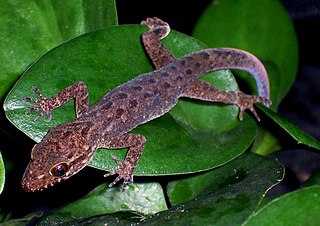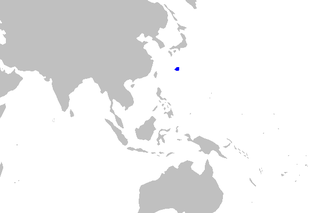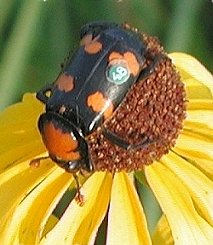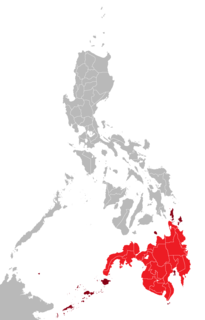
The Cyprinidae are the family of freshwater fishes, collectively called cyprinids, that includes the carps, the true minnows, and their relatives. Also commonly called the "carp family", or "minnow family", Cyprinidae is the largest and most diverse fish family and the largest vertebrate animal family in general, with about 3,000 species of which only 1,270 remain extant, divided into about 370 genera.. They range from about 12 mm to the 3-m Catlocarpio siamensis. These fish are some of the few that do not take care of their eggs. The family belongs to the ostariophysian order Cypriniformes, of whose genera and species the cyprinids make up more than two-thirds. The family name is derived from the Ancient Greek kyprînos.

The Argasidae are the family of soft ticks, one of the two families of ticks. The family contains 193 species, although the composition of the genera is less certain, and more study is needed before the genera can become stable. The currently accepted genera are Antricola, Argas, Nothoaspis, Ornithodoros, and Otobius. The Argasidae are very common in South Asia, along with other 96 species of ticks, making South Asia the most tick-diverse place worldwide. Soft ticks are resistant to dessication and can live for several years in arid conditions.

Mount Apo is a large solfataric, potentially active stratovolcano on the island of Mindanao, Philippines. With an elevation of 2,954 meters (9,692 ft) above sea level, it is the highest mountain in the Philippine Archipelago and is located between Davao City and Davao del Sur province in Region XI and Cotabato in Region XII. The peak overlooks Davao City 45 kilometers (28 mi) to the northeast, Digos 25 kilometers (16 mi) to the southeast, and Kidapawan 20 kilometers (12 mi) to the west.

Carotenoids, also called tetraterpenoids, are yellow, orange, and red organic pigments that are produced by plants and algae, as well as several bacteria and fungi. Carotenoids give the characteristic color to pumpkins, carrots, corn, tomatoes, canaries, flamingos, and daffodils. Carotenoids can be produced from fats and other basic organic metabolic building blocks by all these organisms. The only animals known to produce carotenoids are aphids and spider mites, which acquired the ability and genes from fungi or it is produced by endosymbiotic bacteria in whiteflies. Carotenoids from the diet are stored in the fatty tissues of animals, and exclusively carnivorous animals obtain the compounds from animal fat. In the human diet, absorption of carotenoids is improved when consumed with fat in a meal. Cooking carotenoid-containing vegetables in oil increases carotenoid bioavailability.

Cyrtodactylus is a diverse genus of Asian geckos, commonly known as bent-toed geckos or bow-fingered geckos. It has at least 250 described species at present, which makes it the largest of all gecko genera.

Apolipoprotein B (ApoB) is a protein that in humans is encoded by the APOB gene.
Aposturisoma myriodon is a species of armored catfish. It is the only species in the genus Aposturisoma.

The rasptooth dogfish is a dogfish, found on the Kyushu-Palau Ridge in the northwest Pacific Ocean at depths of 360 m. Its maximum length is unknown. This species was originally described as Centroscyllium sheikoi, and subsequently allocated to the newly-named genus Miroscyllium based on anatomical features not shared with other Centroscyllium. More recent molecular data suggest this species belongs to the genus Etmopterus, but as of June 2014 Miroscyllium sheikoi remains the valid name recognized by FishBase, the Catalog of Fishes World Register of Marine Species, and the IUCN

Clusiidae or "druid flies" is a family of small, thin, yellow to black acalyptrate flies with a characteristic antenna and with the wing usually partially infuscated. They have a cylindrical body. The head is round, the vertical plate reaches the anterior margin of the frons and the vibrissae on the head are large. The costa is interrupted near subcosta and the latter developed throughout length. Larvae are found in the bark of trees, the flies on trunks.The larvae are notable for their ability to jump. Males of many species in the subfamily Clusiodinae have been observed while engaged in lekking behaviour. There are hundreds of species in 14 genera found in all the Ecoregions, although most species occur in tropical regions. The type genus is Clusia Haliday, 1838.

Schistura is a genus of fish in the stone loach family Nemacheilidae native to the streams and rivers of the southern and eastern Asia. Some of these species are troglobitic.

Apolipoprotein A-IV is plasma protein that is the product of the human gene APOA4.

Nicrophorinae is a subfamily of burying beetles or carrion beetles. There are 65 living species of this subfamily, and 3 fossil species.
Nicrophorus argutor is a species of burying beetle found in Russia, Mongolia, China and Kazakhstan.

For the species misidentified by Gyllenhal in 1827 and declared a new species under the name Nicrophorus sepultor, but later corrected, see Nicrophorus vestigator
Nicrophorus chryseus may be a species of burying beetle described by Mazokhin-Porshnyakov in 1953. It is not yet verified that this species is unique from other species of Nicrophorus.
Nicrophorus funerarius may be a species of burying beetle described by Weigel in 1808. It is not yet verified that this species is unique from other species of Nicrophorus.
Crocidura phanluongi is a species of shrew in the genus Crocidura from southern Vietnam and nearby Cambodia. It is a somewhat small, gray shrew with an ecologically diverse distribution.
The Nemacheilidae, or stone loaches, are a family of cypriniform fishes that inhabit stream environments, mostly in Eurasia, with one genus, Afronemacheilus found in Africa. The family includes about 630 species.

The Lana's sawshark or Philippine sawshark, Pristiophorus lanae, is a sawshark of the family Pristiophoridae, found in the Philippines off Apo Island and southern Luzon at depths of between 230 and 590 m. Its length is up to 73 cm.

The long-toothed pipistrelle is a species of bat of the genus Hypsugo. It is a small bat, with a length of 35.2–38.4 mm of forearm, and 5.9–7 mm of foot. It feeds on insects and has especially long canines compared to others of its genus.
















